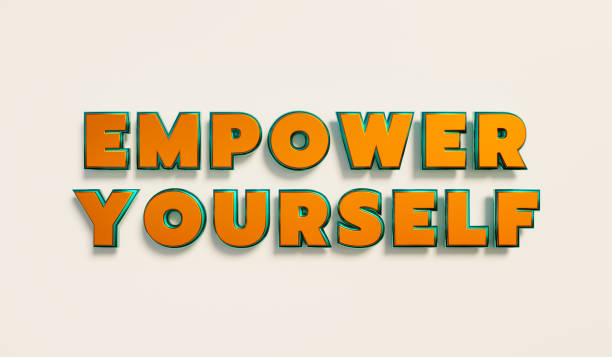In recent years, there has been a growing movement towards empowering women in the workplace. From addressing the gender pay gap to promoting diversity and inclusion, there is a growing recognition of the importance of creating an equal and empowering work environment for women. But why does it matter? The answer is simple: empowering women not only benefits individuals, but also leads to a stronger and more successful workforce as a whole. In this blog post, we will delve into the reasons why empowering women in the workplace is crucial and explore some practical steps that individuals and organizations can take to make a positive impact.
Understanding the Current Status of Women in the Workplace
Understanding the current status of women in the workplace is crucial in order to address the existing disparities and create a more equal and inclusive environment. While progress has been made in recent times, there is still a long way to go.
One key aspect to consider is the gender pay gap. Studies consistently show that women are paid less than their male counterparts for doing the same job. This not only perpetuates economic inequality, but also undermines women’s confidence and value in the workplace.
Another issue is the under representation of women in leadership positions. Despite making up a significant portion of the workforce, women are still underrepresented in higher-level positions. This lack of representation can limit their career progression and hinder their ability to influence decision-making processes.
Furthermore, workplace culture and biases also play a significant role in the experiences of women in the workplace. Stereotypes, discrimination, and harassment can create a hostile work environment that is detrimental to women’s professional growth and overall well-being.
Understanding the current status of women in the workplace is the first step towards creating meaningful change. By acknowledging and addressing these disparities, we can work towards empowering women and creating a more equitable and inclusive work environment for all.

The significance of Empowering Women in the Workplace
When it comes to empowering women in the workplace, the importance cannot be overstated. Creating an equal and empowering work environment for women is not just a matter of fairness and social justice, but it also directly impacts the success and productivity of the entire workforce.
First and foremost, empowering women in the workplace leads to a more diverse and inclusive environment. By providing equal opportunities for women to succeed and thrive, businesses are able to tap into a wider pool of talent and perspectives. This diversity fosters creativity, innovation, and problem-solving, ultimately driving better business outcomes.
Furthermore, empowering women in the workplace promotes employee satisfaction and retention. When women feel valued, supported, and empowered, they are more likely to be engaged in their work and motivated to contribute their best. This not only improves individual performance, but also creates a positive and collaborative work culture that benefits everyone.
Additionally, empowering women in leadership positions has a ripple effect throughout the organization. Women in leadership can serve as role models and mentors for others, inspiring and empowering the next generation of women in the workforce. This not only helps to break down gender stereotypes and biases, but also ensures that diverse voices are represented at decision-making tables, leading to more informed and inclusive strategies.
In summary, empowering women in the workplace is crucial for creating a diverse, inclusive, and successful workforce. It benefits individualities, businesses, and society as a whole. By taking proactive steps to empower women, we can build a more equitable and prosperous future.

Strategies for Empowering Women in Your Business
Now that we understand the importance of empowering women in the workplace, let’s explore some practical strategies that you can implement in your own business to create a more inclusive and empowering environment.
- Equal Pay: Conduct regular pay audits to ensure that women are being paid equally for doing the same work as their male counterparts. Eliminating the gender pay gap is crucial in promoting fairness and ensuring that women feel valued and recognized for their contributions.
- Flexible Work Arrangements: Offer flexible work arrangements, such as remote work options or flexible hours, to accommodate the diverse needs of your employees. This can be particularly beneficial for women who may have care giving responsibilities or other personal commitments.
- Mentorship and Sponsorship Programs: Establish mentorship and sponsorship programs within your organization to support the career development of women. Pair women with senior leaders who can provide guidance, support, and advocate for their advancement.
- Leadership Training and Development: Provide leadership training and development opportunities specifically tailored for women. This can help them develop the necessary skills and confidence to pursue leadership positions within your organization.
- Create a Supportive Culture: Foster a culture of inclusivity, respect, and support. Encourage open dialogue, promote diversity, and ensure that all employees, regardless of gender, feel safe and valued.
- Address Unconscious Bias: Train your employees, especially those in managerial positions, on unconscious bias and its impact on decision-making. This can help mitigate bias in hiring, promotions, and performance evaluations, leading to a fairer and more equitable workplace.
- Encourage Employee Resource Groups: Support and encourage the formation of employee resource groups that focus on women’s issues and empowerment. These groups can provide a platform for networking, mentorship, and advocacy.
Remember, empowering women in your business is not a one-time event, but an ongoing commitment. By implementing these strategies, you can create a workplace that fosters diversity, equality, and empowerment for all employees.

The Benefits of Gender Equality at Work
Gender equality in the workplace brings a multitude of benefits that extend beyond fairness and social justice. When women are empowered and given equal opportunities, the entire workforce thrives and succeeds.
One of the primary benefits of gender equality is a more diverse and inclusive work environment. By ensuring that women have equal access to opportunities, businesses tap into a wider range of talent and perspectives. This diversity fosters creativity, innovation, and problem-solving, leading to better business outcomes. Additionally, diverse teams are more adaptable and able to navigate challenges effectively.
Gender equality also promotes employee satisfaction and retention. When women feel valued, supported, and empowered, they are more engaged in their work and motivated to contribute their best. This improves individual performance and creates a positive work culture, characterized by collaboration and mutual support. Happy and engaged employees lead to higher productivity and profitability.
Furthermore, when women hold leadership positions, the entire organization benefits. Women leaders serve as role models and mentors, inspiring the next generation of women in the workforce. Their presence challenges gender stereotypes and biases, and ensures that diverse perspectives are represented at decision-making tables. This results in more informed and inclusive strategies, which are vital for business success in today’s globalized world.
In summary, gender equality in the workplace brings numerous advantages, including increased diversity, improved employee satisfaction, and enhanced leadership capabilities. By empowering women and creating an inclusive work environment, businesses create a stronger and more successful workforce that is poised for growth and innovation.

Empowerment Success Stories – Real-life Examples
When it comes to empowering women in the workplace, real-life success stories serve as powerful inspiration and proof of the positive impact that empowerment can have. Let’s take a look at some real-life examples of organizations that have taken significant steps towards creating an inclusive and empowering work environment for women.
One such success story is the tech giant Salesforce. In 2015, Salesforce conducted a comprehensive pay audit to address the gender pay gap within the company. As a result, they invested $3 million to close the pay gap and committed to conducting annual audits to ensure ongoing pay equity. This commitment not only demonstrated their dedication to fairness and equality but also improved employee morale and retention.
Another inspiring example is Microsoft. Under the leadership of CEO Satya Nadella, Microsoft has made significant efforts to promote diversity and inclusion within the organization. They have set clear diversity and inclusion goals, established employee resource groups for women, and implemented unconscious bias training for managers. As a result, Microsoft has seen an increase in the number of women in leadership positions and a more inclusive company culture.
The sports apparel company Nike has also made strides in empowering women in the workplace. They launched the “Nike Equal” campaign, which aimed to close the gender pay gap and increase representation of women in leadership roles. Through this campaign, Nike pledged to increase representation of women in leadership positions by 50% by 2020 and committed to pay transparency.
These real-life success stories highlight the power of commitment, transparency, and actionable steps in empowering women in the workplace. By implementing strategies to address gender disparities, these organizations have created a more inclusive and empowering work environment for women, resulting in improved business outcomes and employee satisfaction.
These success stories demonstrate that empowering women is not just a lofty ideal but a tangible and achievable goal. By learning from these examples, individuals and organizations can be inspired to take similar actions and make a positive impact on gender equality in the workplace. It is through these collective efforts that we can create a future where every woman has the opportunity to thrive and succeed in the workplace.

Challenges and Solutions for Empowering Women
Empowering women in the workplace is a noble goal, but it comes with its fair share of challenges. One of the biggest challenges is overcoming deep-rooted biases and stereotypes that have shaped workplace cultures for decades. These biases often result in unequal treatment and limited opportunities for women.
Another challenge is the lack of support and resources available to women in the workplace. Women often face unique obstacles such as balancing work and family responsibilities, navigating gendered expectations, and overcoming imposer syndrome. Without adequate support systems in place, it can be difficult for women to fully realize their potential and thrive in their careers.
Additionally, the lack of representation of women in leadership positions presents a major challenge. Without visible role models and mentors, women may struggle to envision themselves in positions of power and influence. This can perpetuate the cycle of under representation and hinder progress towards gender equality.
To address these challenges, organizations can implement several solutions. First, they can invest in diversity and inclusion training programs to educate employees about unconscious bias and create a more inclusive work culture. Additionally, organizations can establish mentorship and sponsorship programs to support the career development of women. Providing opportunities for women to learn from and be guided by experienced leaders can be instrumental in their success.
Flexible work arrangements can also be a solution, as they can help women balance their work and personal lives. By offering options such as remote work or flexible hours, organizations can create a more supportive and accommodating environment for women.
In summary, while there are certainly challenges to empowering women in the workplace, there are also effective solutions. By addressing biases, providing support systems, and creating opportunities for growth, organizations can pave the way for gender equality and create an environment where all employees can thrive.

The Future of Women’s Empowerment in the Workplace
The future of women’s empowerment in the workplace is filled with hope and promise. As we continue to push for progress and equality, there are several key trends and developments that give us reason to be optimistic.
One of these trends is the increasing focus on diversity and inclusion in corporate culture. Companies are recognizing that a diverse workforce, including women in leadership roles, brings fresh perspectives, innovative ideas, and better business outcomes. As a result, we can expect to see more organizations prioritizing diversity and implementing strategies to empower and support women in their careers.
Another important development is the growing support for work-life balance. As more women strive to balance their personal and professional lives, there is a growing demand for flexible work arrangements and supportive policies. Companies that prioritize work-life balance and provide the necessary resources and support will be better positioned to attract and retain talented women.
Additionally, the rise of technology and remote work has opened up new opportunities for women to thrive in their careers. Remote work allows for greater flexibility and eliminates geographical barriers, providing women with more options to pursue their professional goals.

Furthermore, the continued advocacy and activism for gender equality will drive change in the workplace. Women’s empowerment movements, such as #ME Too and #Times Up, have brought critical issues to the forefront and sparked conversations about gender disparities. This increased awareness will continue to push organizations to take meaningful action and create more equitable and empowering work environments.
In conclusion, the future of women’s empowerment in the workplace looks promising. With a focus on diversity, work-life balance, technological advancements, and continued advocacy, we can expect to see more women breaking barriers and succeeding in their careers. It is through these collective efforts that we will create a future where women are truly empowered and equal in the workplace.





How work women in house financing,?